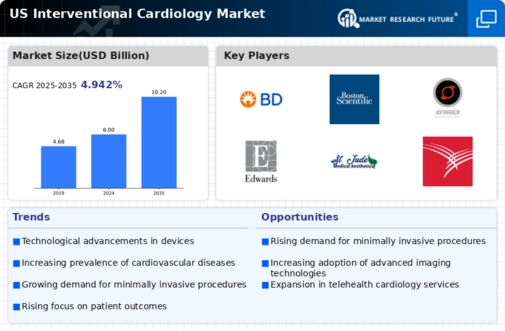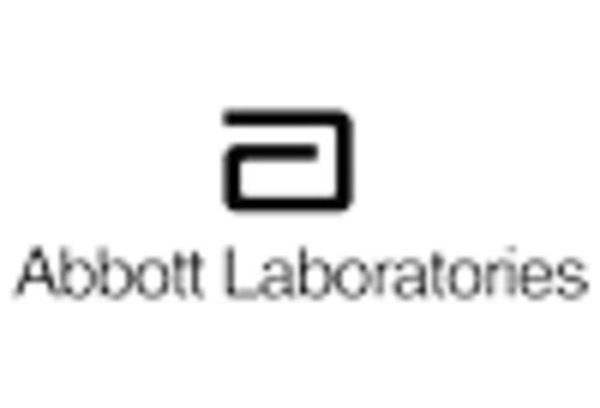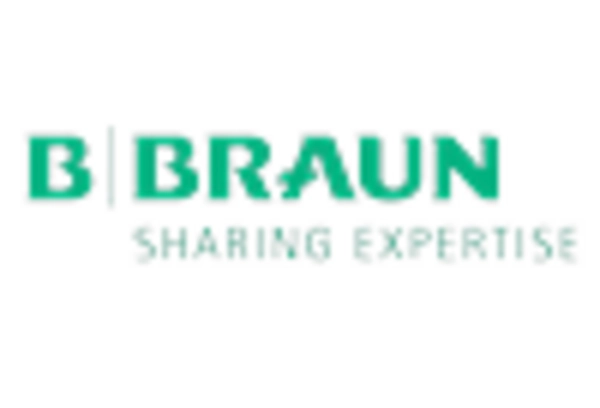Rising Healthcare Expenditure
In the US, increasing healthcare expenditure is a significant driver of the interventional cardiology market. As healthcare budgets expand, there is a greater allocation of funds towards advanced medical technologies and procedures. In 2025, healthcare spending is projected to reach approximately $4 trillion, with a substantial portion directed towards cardiovascular care. This financial commitment enables hospitals and clinics to invest in state-of-the-art equipment and training for healthcare professionals, thereby enhancing the quality of care. Consequently, the interventional cardiology market is likely to benefit from this trend, as more resources become available for innovative treatments.
Aging Population and Associated Health Issues
The demographic shift towards an aging population in the US is significantly impacting the interventional cardiology market. As individuals age, the prevalence of cardiovascular diseases tends to increase, necessitating more interventional procedures. By 2030, it is estimated that nearly 20% of the US population will be over 65 years old, a demographic that is particularly susceptible to heart conditions. This growing segment is likely to drive demand for interventional cardiology services, as older patients often require more complex interventions. The healthcare system is thus adapting to meet these needs, which may lead to an expansion of the interventional cardiology market.
Advancements in Medical Devices and Technologies
Innovations in medical devices and technologies are playing a crucial role in shaping the interventional cardiology market. The introduction of advanced stents, bioresorbable scaffolds, and improved imaging systems has enhanced the precision and effectiveness of interventional procedures. For instance, the market for coronary stents alone is projected to reach $5 billion by 2026, reflecting a growing reliance on these technologies. Furthermore, the integration of artificial intelligence and machine learning in diagnostic tools is expected to streamline procedures and improve patient outcomes. These advancements are likely to bolster the interventional cardiology market as healthcare providers seek to adopt the latest technologies.
Increasing Demand for Minimally Invasive Procedures
The interventional cardiology market is experiencing a notable shift towards minimally invasive procedures, driven by patient preference for reduced recovery times and lower complication rates. As techniques such as angioplasty and stenting become more refined, the demand for these procedures is expected to rise. In the US, the market for minimally invasive cardiovascular procedures is projected to grow at a CAGR of approximately 8% over the next five years. This trend is further supported by advancements in imaging technologies and catheter designs, which enhance procedural efficacy and safety. Consequently, healthcare providers are increasingly adopting these techniques, leading to a more robust interventional cardiology market.
Growing Awareness and Education on Cardiovascular Health
The interventional cardiology market is also being influenced by increasing awareness and education regarding cardiovascular health among the general population. Public health campaigns and initiatives aimed at promoting heart health are leading to earlier detection and treatment of cardiovascular diseases. As individuals become more informed about risk factors and symptoms, they are more likely to seek medical intervention sooner. This proactive approach is expected to drive demand for interventional cardiology services, as timely interventions can significantly improve patient outcomes. The emphasis on education and awareness is likely to contribute positively to the growth of the interventional cardiology market.

















Leave a Comment